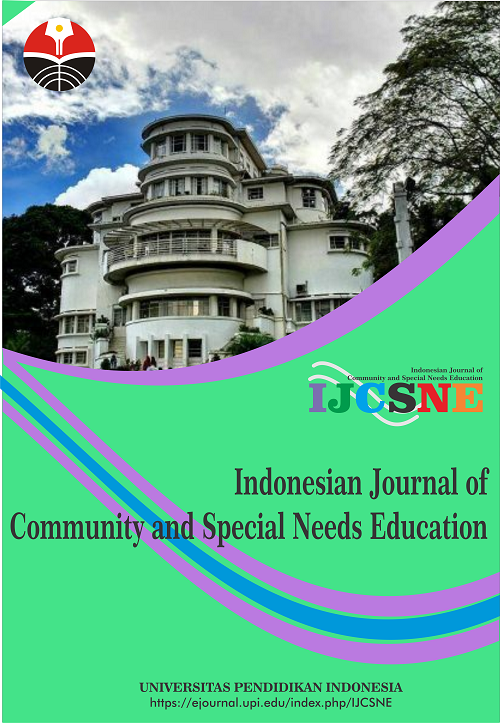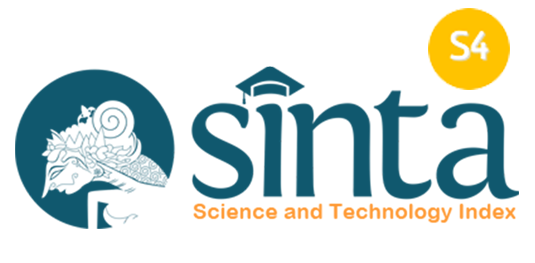Science Education for Students with Special Needs in Indonesia: From Definition, Systematic Review, Education System, to Curriculum
Abstract
The purpose of this study is to determine the teaching, curriculum, and methods used by teachers in the science learning process for students with special needs in Indonesia. We use qualitative research methods. The subjects in this study are students with special needs (children with visual impairments, children with hearing impairments, children with intellectual disabilities, and children with physical impairments) at one of the special schools (SLB) in Kuningan, Indonesia. The results show that most of the teachers use the curriculum from teacher books provided by the government. In addition, some teachers used the lecture and question and answer method in the science learning process. The results in low student achievement because students with special needs need concrete media and methods that accommodate student needs.
Keywords
Full Text:
PDFReferences
Forbis, S., Rammel, J., Huffman, B., and Taylor, R. (2006). Barriers to care of inner‐city children with asthma: school nurse perspective. Journal of School Health. 76(6), 205-207.
Haryanto. (2011). Asesmen Pendidikan Luar Biasa. Yogyakarta: Universitas Negeri Yogyakarta.
Soendari, T., Abdurahman, M., and Mahmud, M. (2008). Pengajaran Asesmen Anak Berkebutuhan Khusus. Bandung: Universitas Pendidikan Indonesia.
Rochyadi , E. and Alimin, Z. (2003). Pengembangan Program Pembelajaran Individual Bagi Anak Tunagrahita. Jakarta: Departemen Pendidikan Nasional DIRJEN Pendidikan Tinggi.
Sharma, U., Forlin, C., Deppeler, J., and Yang, G. X. (2013). Reforming teacher education for inclusion in developing countries in the Asia Pacific region. Asian Journal of Inclusive Education, 1(1), 3-16.
Duncan , R. G., and Rivet, A. E. (2013). Science learning progressions. Science, 339(6118) 396-397.
Ersoy and Esen. (2014). The effects of problem-based learning method in higher education on creative thinking. Procedia-Social and Behavioral Sciences, 116(2014), 3494-3498.
Sumantri, Syarif, M., and Rachmadtullah, R. (2016). The effect of learning media and self regulation to elementary students’ history learning outcome. Advanced Science Letters. 22(12), 4104-4108.
Perkins, K., Columna, L., Lieberman, L., and Bailey, J. (2013). Parents’ perceptions of physical activity for their children with visual impairments. Journal of Visual Impairment & Blindness, 107(2), 131-142.
Al-Rowaily, M. A., AlFayez, A. I., AlJomiey, M. S., AlBadr, A. M., and Abolfotouh, M. A. (2012). Hearing impairments among Saudi preschool children. International Journal of Pediatric Otorhinolaryngology, 76(11) 1674-1677.
Giagazoglou, P., Kokaridas, D., Sidiropoulou, M., Patsiaouras, A., Karra, C., and Neofotistou, K. (2013). Effects of a trampoline exercise intervention on motor performance and balance ability of children with intellectual disabilities. Research in developmental disabilities, 34(9), 2701-2707.
Reinehr, T., Dobe, M., Winkel, K., Schaefer, A., and Hoffmann, D. (2010). Obesity in disabled children and adolescents: an overlooked group of patients. Deutsches Ärzteblatt International, 107(15), 268-178.
Oliver, R. M. and Reschly, D. J. (2010). Special education teacher preparation in classroom management: Implications for students with emotional and behavioral disorders. Behavioral Disorders, 35(3), 188-199.
Johnson, E. S., Humphrey, M., Mellard, D. F., Woods, K., and Swanson, H. L. (2010). Cognitive processing deficits and students with specific learning disabilities: A selective meta-analysis of the literature. Learning Disability Quarterly, 33(1), 3-18.
Charman, T., Pickles, A., Simonoff, E., Chandler, S., Loucas, T., and Baird, G. (2010). IQ in children with autism spectrum disorders: data from the Special Needs and Autism Project (SNAP). Psychological Medicine, 41(3), 619-627.
Keown, L. J. (2012)., Predictors of boys’ ADHD symptoms from early to middle childhood: The role of father–child and mother–child interactions. Journal of abnormal child psychology, 40(4), 569-581.
Jahnukainen, M. (2011). Different strategies, different outcomes? The history and trends of the inclusive and special education in Alberta (Canada) and in Finland. Scandinavian Journal of Educational Research, 55(5), 489-502.
Ford, D. Y. (2012)., Culturally different students in special education: Looking backward to move forward. Exceptional Children, 78(4), 391-405.
Runswick‐Cole, K. (2011). Time to end the bias towards inclusive education?. British Journal of Special Education, 38(3), 112-119.
Mokiwa, H. O., and Msila, V. (2013). Teachers’ conceptions of teaching physical science in the medium of English: A case study. International Journal of Educational Sciences, 5(1), 55-62.
Permanasari, A. (2016). STEM education: Inovasi dalam pembelajaran sains. In Prosiding SNPS (Seminar Nasional Pendidikan Sains), 3(2016), 23-34.
DOI: https://doi.org/10.17509/ijcsne.v1i1.32653
Refbacks
- There are currently no refbacks.
Copyright (c) 2021 Universitas Pendidikan Indonesia

This work is licensed under a Creative Commons Attribution-ShareAlike 4.0 International License.















